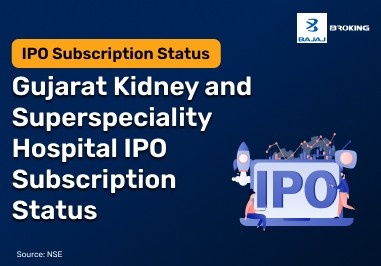The Tax to Gross Domestic Product (GDP) ratio is a key economic indicator used to evaluate a country's ability to generate tax revenue in relation to its overall economic activity. This ratio serves as a measure of a nation’s tax system efficiency and the government’s capacity to mobilise financial resources for public expenditure. A higher ratio suggests a robust revenue base, while a lower one may reflect a limited capacity to fund developmental priorities without borrowing.
Understanding the tax-to-GDP ratio helps governments, economists, and policymakers assess fiscal strength, identify gaps in revenue generation, and develop strategies for reforming the taxation framework.
What is Tax to GDP Ratio in India?
The Tax to GDP ratio is calculated by dividing the total tax revenue collected by the government by the country’s Gross Domestic Product in a given year. It can include both direct taxes (like income tax and corporate tax) and indirect taxes (such as GST, customs duty, and excise duty).
Key Points:
According to RBI and Union Budget documents, gross tax revenue for FY25 is estimated at 11.7% of GDP, slightly higher than the earlier projected 11.1%
(Source: Ministry of Finance – Budget Documents 2024-25)
Example of Tax to GDP Ratio
Below is a table illustrating how the tax to GDP ratio is computed using sample data:
Year
| Total Tax Revenue (₹ crore)
| GDP (₹ crore)
| Tax to GDP Ratio (%)
|
2022–23
| 27,10,000
| 272,00,000
| 9.96%
|
2023–24 (RE)
| 34,37,000
| 300,00,000
| 11.46%
|
2024–25 (BE)
| 38,31,000
| 345,00,000
| 11.1%
|
Note: RE – Revised Estimates; BE – Budget Estimates
(Source: Union Budget Documents 2024–25)
Factors Affecting the Tax-to-GDP Ratio
Several structural, administrative, and behavioural elements influence a country’s tax to GDP ratio. In India, the ratio has historically remained lower than the global average, largely due to a narrow tax base and large informal economy.
Economic and Policy Factors:
Size of Informal Sector: A large portion of India’s workforce is employed informally, often outside the tax net.
Per Capita Income: Lower income levels mean fewer people qualify to pay direct taxes.
Tax Compliance: The degree to which individuals and businesses file returns honestly impacts revenue generation.
Tax Policy Structure:
Administrative Efficiency: The effectiveness of tax enforcement and the ease of filing returns also impact collection rates.
Additional Considerations:
Digitalization: Initiatives such as the GSTN, e-invoicing, and Aadhaar linking have enhanced transparency.
Tax Reforms: Measures such as corporate tax rate cuts and faceless assessment impact collections in the short term.
Global Trade Trends: Import/export duties change in response to global economic dynamics.
How Does the Tax to GDP Ratio Affect the Economy?
How Does the Tax to GDP Ratio Impact the Economy?
The tax to GDP ratio plays a pivotal role in determining how a government funds its activities. A stable ratio supports fiscal stability, whereas a consistently low ratio could contribute to increased borrowing, inflation, or cut-back developmental expenditure.
Economic Implications:
Government Spending: With an increased ratio, there can be greater public spending on infrastructure, education, and healthcare.
Fiscal Deficit: Decreased tax revenues may enlarge the fiscal deficit, leading to borrowing and debt repayment charges.
Investor Confidence: A stable ratio enhances macroeconomic stability, increasing the country's attractiveness for investors.
Credit Ratings: Foreign rating agencies tend to consider this ratio while rating sovereign creditworthiness.
In India, widening the tax to GDP ratio has been an old ambition, efforts being put into broadening the tax base, checking evasion, and enhancing digital surveillance.
Conclusion
The Tax to GDP ratio indicates the efficiency with which a nation raises revenue relative to its economic activity. In India, while the ratio has improved across recent years, it is still lower compared to what is observed in most emerging and developed economies. Structural issues, including enhancing tax compliance, broadening the tax base, and bringing in the informal economy, would potentially allow the ratio to improve over time.
Sustained reforms in tax administration, process simplification, and enhanced enforcement will be essential to reaching a more stable and better-balanced fiscal system.














